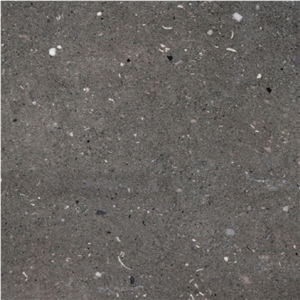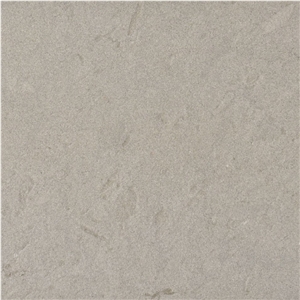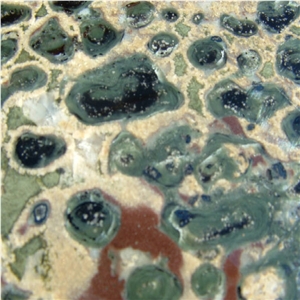Calcarenite
( 9 )
Country:
-
 Additional Names:Jaspis Brown CalcareniteJaspis Brown CalcarenitePost Request
Additional Names:Jaspis Brown CalcareniteJaspis Brown CalcarenitePost Request Australia
-Calcarenite
Australia
-Calcarenite -
 Additional Names:Red Stromatolites,Red Stromatolith Calcarenite,Stromatolite Jasper Calcarenite,Red Jasper Calcarenite,Jasper Red Calcarenite,Red Jasper Stromatolite,Fossil StromatoliteRed Stromatolites,Red Stromatolith Calcarenite,Stromatolite Jasper Calcarenite,Red Jasper Calcarenite,Jasper Red Calcarenite,Red Jasper Stromatolite,Fossil StromatolitePost Request
Additional Names:Red Stromatolites,Red Stromatolith Calcarenite,Stromatolite Jasper Calcarenite,Red Jasper Calcarenite,Jasper Red Calcarenite,Red Jasper Stromatolite,Fossil StromatoliteRed Stromatolites,Red Stromatolith Calcarenite,Stromatolite Jasper Calcarenite,Red Jasper Calcarenite,Jasper Red Calcarenite,Red Jasper Stromatolite,Fossil StromatolitePost Request United States
-Calcarenite
United States
-Calcarenite -
 Additional Names:Taconite Iron Ore,Taconite Stone,Taconite Granite,Taconite Brown CalcareniteTaconite Iron Ore,Taconite Stone,Taconite Granite,Taconite Brown CalcarenitePost Request
Additional Names:Taconite Iron Ore,Taconite Stone,Taconite Granite,Taconite Brown CalcareniteTaconite Iron Ore,Taconite Stone,Taconite Granite,Taconite Brown CalcarenitePost Request United States
-Calcarenite
United States
-Calcarenite -
 Additional Names:Macao Brown LimestoneMacao Brown LimestonePost Request
Additional Names:Macao Brown LimestoneMacao Brown LimestonePost Request Spain
-Calcarenite
Spain
-Calcarenite -
 Additional Names:Arenaria Turmak Grigio,Turmak Grey Sandstone,Turmak Grey Calcareous,Turmak Grey LimestoneArenaria Turmak Grigio,Turmak Grey Sandstone,Turmak Grey Calcareous,Turmak Grey LimestonePost Request
Additional Names:Arenaria Turmak Grigio,Turmak Grey Sandstone,Turmak Grey Calcareous,Turmak Grey LimestoneArenaria Turmak Grigio,Turmak Grey Sandstone,Turmak Grey Calcareous,Turmak Grey LimestonePost Request Italy
-Calcarenite
Italy
-Calcarenite -
 Additional Names:Pietra Del Brasimone Classico CalcarenitePietra Del Brasimone Classico CalcarenitePost Request
Additional Names:Pietra Del Brasimone Classico CalcarenitePietra Del Brasimone Classico CalcarenitePost Request Italy
-Calcarenite
Italy
-Calcarenite -
 Additional Names:Grigio Perla Sandstone,Grigio Perla Arenaria,Grigio Perla Toscano,Arenaria Grigio PerlaGrigio Perla Sandstone,Grigio Perla Arenaria,Grigio Perla Toscano,Arenaria Grigio PerlaPost Request
Additional Names:Grigio Perla Sandstone,Grigio Perla Arenaria,Grigio Perla Toscano,Arenaria Grigio PerlaGrigio Perla Sandstone,Grigio Perla Arenaria,Grigio Perla Toscano,Arenaria Grigio PerlaPost Request Italy
-Calcarenite
Italy
-Calcarenite -
 Additional Names:Desert Grey Stone,Desert Green Calcarenite,Desert Gray CalcareniteDesert Grey Stone,Desert Green Calcarenite,Desert Gray CalcarenitePost Request
Additional Names:Desert Grey Stone,Desert Green Calcarenite,Desert Gray CalcareniteDesert Grey Stone,Desert Green Calcarenite,Desert Gray CalcarenitePost Request United States
-Calcarenite
United States
-Calcarenite -
 Additional Names:Terra Di Procida LimestoneTerra Di Procida LimestonePost Request
Additional Names:Terra Di Procida LimestoneTerra Di Procida LimestonePost Request Italy
-Calcarenite
Italy
-Calcarenite
- 1
-
Can United States's Desert Grey Calcarenite be used outdoors?Yes, United Statess Desert Grey Calcarenite can be used outdoors. Calcarenite is a type of limestone composed of smaller grains of sediment which are cemented together. It is a durable and weather-resistant material that can withstand outdoor conditions. Calcarenite is often used for various outdoor applications such as exterior cladding, paving, landscaping, and outdoor sculptures. However, it is always recommended to consult with a professional or supplier to ensure the specific calcarenite material is suitable for the intended outdoor use and is properly maintained over time.Read More
-
Can Italy's Turmak Grey Calcarenite be used outdoors?Yes, Italys Turmak Grey Calcarenite can be used outdoors. It is a limestone that is durable and suitable for exterior applications such as paving, cladding, and landscaping. However, it is always recommended to consult with professionals or experts in the field to determine the specific suitability of the stone for your particular project.Read More
-
What is the coefficient of friction of Filled United States's Taconite Calcarenite tiles?The coefficient of friction of Filled United Statess Taconite Calcarenite tiles is not readily available information. It would be best to contact the manufacturer or supplier of these tiles to obtain specific information on their coefficient of friction.Read More
-
Can United States's Desert Grey Calcarenite be used in wall coverings?Yes, United Statess Desert Grey Calcarenite can be used in wall coverings as it is a durable and sturdy type of limestone with an attractive grey color that can enhance the aesthetics of wall coverings. However, it is recommended to consult with a professional stone supplier or installer to get the best advice on suitability and installation techniques.Read More
-
Are there color variations of Australia's Jaspis Calcarenite?Australia’s Jaspis Calcarenite typically occurs in a range of colors and variations. The stone is primarily found in Western Australia and is known for its vibrant and bold patterns. The colors can vary from deep reds and oranges to earthy browns, yellows, and occasionally greens. Additionally, there can be variations in patterns and banding, making each piece of Jaspis Calcarenite unique.Read More
-
Are there color variations of Italy's Turmak Grey Calcarenite?Yes, there can be slight color variations of Italys Turmak Grey Calcarenite, as natural stones can exhibit variation in color and veining. This can be due to factors such as the quarry location, formation process, and mineral composition. The Turmak Grey Calcarenite generally features a light to medium grey color with varying shades and patterns, but specific variations can occur. It is advisable to consult with a stone supplier or visit a quarry to see the range of color options available.Read More
-
Can Italy's Grigio Perla Calcarenite be used in floor coverings?Yes, Italys Grigio Perla Calcarenite can be used in floor coverings. Grigio Perla Calcarenite is a type of limestone and is commonly used as a material for flooring due to its durability and elegant appearance. It can be cut into tiles or slabs and installed as a flooring option in various areas such as kitchens, bathrooms, or living rooms.Read More
-
Is Australia's Jaspis Calcarenite an expensive stone?Jasper Calcarenite is not generally considered to be an expensive stone. It is a type of sedimentary rock primarily composed of jasper and calcite, and it is more commonly used for decorative purposes rather than as a high-value gemstone. The cost of this stone can vary depending on factors such as size, quality, and market demand. However, compared to other gemstones, jasper calcarenite tends to be more affordable.Read More
-
How much does a Calcarenite quarry block weight?I dont have sufficient information about the size or dimensions of the Calcarenite quarry block to determine its weight. However, generally Calcarenite quarry blocks can weigh around 15-20 tons.Read More
-
Can United States's Stromatolite Calcarenite be used exterior applications in very rainy climates?Stromatolite Calcarenite is a type of sedimentary rock formed by the accumulation of layers of lime-rich sediments. As with any natural stone, its suitability for exterior applications in rainy climates would depend on a variety of factors. While Stromatolite Calcarenite is generally durable and weather-resistant, it may not be the most ideal option for very rainy climates due to its inherent properties. Here are a few considerations: 1. Porosity: Calcarenite tends to be more porous compared to harder stones like granite or basalt. Porous rocks can absorb water, which may cause them to weaken over time, especially in regions with frequent or heavy rainfall. This could lead to issues like cracking or disintegration. 2. Water staining: The porosity of Stromatolite Calcarenite can also make it more prone to water staining. In rainy environments, constant exposure to moisture can result in the growth of molds, mildew, or algae on the stone surface, leading to discoloration and a less aesthetically pleasing appearance. 3. Freezing and thawing: If you live in an area with freezing temperatures, the repeated cycle of water penetrating the stone, freezing, and then thawing can further contribute to the deterioration of Stromatolite Calcarenite. The expansion and contraction caused by freezing and thawing can lead to the development of cracks or fractures in the stone. While it might be possible to use Stromatolite Calcarenite for exterior applications in very rainy climates, it would require careful consideration, proper sealing, and maintenance. The stone should be sealed with an appropriate outdoor grade sealer to minimize water absorption and potential damage. Regular cleaning and maintenance to remove any moisture-absorbing contaminants and preventive measures to prevent water pooling or stagnation on the stone surface are also crucial. Ultimately, consulting with a local stone supplier or a professional contractor experienced in the specific climate conditions would be advisable to determine the best stone options for exterior applications in very rainy climates.Read More
-
Are there color variations of Spain's Macao Brown Calcarenite?There are no specific color variations of Spains Macao Brown Calcarenite. It is primarily a brown-colored calcarenite, which is a type of limestone composed of fragments of shells, corals, and other marine organisms. The specific shade and appearance may vary slightly based on factors such as impurities, weathering, and the specific quarry or location from which it is sourced, but the overall color is generally brown.Read More
-
Can Calcarenite be used indoors?Calcarenite can be used indoors as a decorative material for walls, floors, countertops, and other surfaces. However, it is important to note that calcarenite is a softer and more porous material than other natural stones such as marble, granite, and quartz, so it requires more care and maintenance to prevent staining, chipping, and wear. Additionally, calcarenite may not be suitable for high-traffic areas or areas that are exposed to moisture or heat, as it is more prone to damage and discoloration. To ensure that calcarenite is a suitable material for your indoor project, it is recommended to consult with a professional stone supplier or installer.Read More
-
Can United States's Stromatolite Calcarenite be used in a kitchen?Stromatolite calcarenite is a type of rock that is formed from the accumulation of calcium carbonate and sediment within an ancient or modern reef environment. While it is technically possible to use calcarenite in a kitchen, there are several factors to consider before doing so. 1. Durability: Calcarenite is generally soft and porous, making it susceptible to scratching, staining, and damage from heat. In a kitchen, where surfaces are exposed to activities like cutting, hot pans, spills, and heavy objects, calcarenite may not withstand daily use without significant wear and tear and require regular maintenance. 2. Hygiene: Due to its porous nature, calcarenite can absorb liquids and food particles, which may become breeding grounds for bacteria and germs. This can make it challenging to maintain a clean and hygienic surface in a kitchen environment. 3. Maintenance: Calcarenite often requires special care and maintenance to keep its appearance intact. It may need periodic sealing to protect it from stains and prevent moisture absorption. Regular cleaning and resealing may be necessary to prevent damage from kitchen liquids, oils, and acidic substances. 4. Aesthetics: Calcarenite typically has a natural, rustic appearance with unique patterns and colors resulting from its formation. While some people may appreciate its natural beauty in a kitchen setting, others might find it less appealing or incompatible with their desired kitchen design style. Considering these factors, it is generally recommended to use more durable and non-porous materials, such as granite, quartz, or solid surface countertops, in kitchen environments. These materials offer better resistance to heat, stains, scratches, and are easier to clean and maintain.Read More
-
Can Australia's Jaspis Calcarenite be used in landscaping?Yes, Australias Jaspis Calcarenite can be used in landscaping. Jaspis Calcarenite, also known as jasper limestone or jasper sandstone, is a type of sedimentary rock that has a distinctive appearance with bands or patterns of different colors. Its aesthetic qualities make it a popular choice for landscape design. Jaspis Calcarenite can be used in landscaping in various ways: 1. Paving and pathways: It can be used as a natural stone paving material for walkways, driveways, patios, and other outdoor spaces. 2. Retaining walls: Due to its durability and strength, Jaspis Calcarenite can be used to build retaining walls, creating terraced gardens or preventing soil erosion. 3. Feature walls: The unique colors and patterns of Jaspis Calcarenite make it suitable for creating attractive and eye-catching feature walls in gardens or outdoor spaces. 4. Garden beds and borders: It can be utilized to create garden beds or borders, enhancing the visual appeal of the landscape. 5. Water features: Jaspis Calcarenite can be used to construct rock formations within water features like ponds, streams, or waterfalls, adding a natural and rustic feel. 6. Sculptures and decorative elements: This type of stone can also be carved or shaped into sculptures or decorative elements for landscaping, such as garden ornaments or seating areas. Additionally, Jaspis Calcarenite is known for being relatively easy to work with, which makes it suitable for both DIY projects and professional landscaping installations. However, it is always important to consider local regulations, availability, and project-specific requirements before using any specific stone in landscaping.Read More
-
Can United States's Taconite Calcarenite be used in a bathroom?Yes, United Statess Taconite Calcarenite can be used in a bathroom. Taconite Calcarenite is a type of sedimentary rock that is durable and commonly used in various construction applications, including bathroom remodels. It can be used for bathroom countertops, flooring, shower walls, or other decorative purposes. However, it is important to note that the suitability of any material for a specific bathroom application may depend on factors such as sealing, maintenance, and personal preferences.Read More
-
Can United States's Taconite Calcarenite be used exterior applications in very sunny climates?I do not have the necessary technical information about the Taconite Calcarenite of the United States. However, as a general guideline, calcarenite rocks tends to be porous and sensitive to weathering, and therefore they may not be recommended for long-term use in very sunny and harsh climates without proper maintenance and protection. It is always best to consult with a technical expert in the field before determining the suitability of a specific material for a particular application.Read More
-
What is the average density of United States's Desert Grey Calcarenite?The average density of United States Desert Grey Calcarenite, also known as desert rock or desert sandstone, can vary depending on its specific composition and properties. However, as a general estimation, the density of calcarenite can range between 1.5 to 2.7 grams per cubic centimeter (g/cm3) or 1500 to 2700 kilograms per cubic meter (kg/m3). It is worth noting that these values are approximate and can vary slightly in different regions or locations within the United States.Read More
-
Can Calcarenite tiles be made Honed?Yes, calcarenite tiles can be made honed. Honing involves grinding the surface of the tile to remove any unevenness and give it a smooth, matte finish. This process can be done on most types of stone tiles, including calcarenite. However, it is important to note that tiles made from softer stones like calcarenite may require extra care and maintenance, as they are more susceptible to scratches and wear over time.Read More
-
How thick is Italy's Terra di Procida Calcarenite slabs?The thickness of Italys Terra di Procida Calcarenite slabs can vary depending on the specific project or manufacturer. However, for standard slabs, the thickness is typically between 2 and 3 centimeters (0.8 to 1.2 inches).Read More
-
Is United States's Taconite Calcarenite an expensive stone?I do not have access to real-time pricing information. However, the cost of Taconite Calcarenite may depend on various factors such as availability, quality, and location of purchase. It is recommended to contact a local stone supplier for the current market price.Read More






